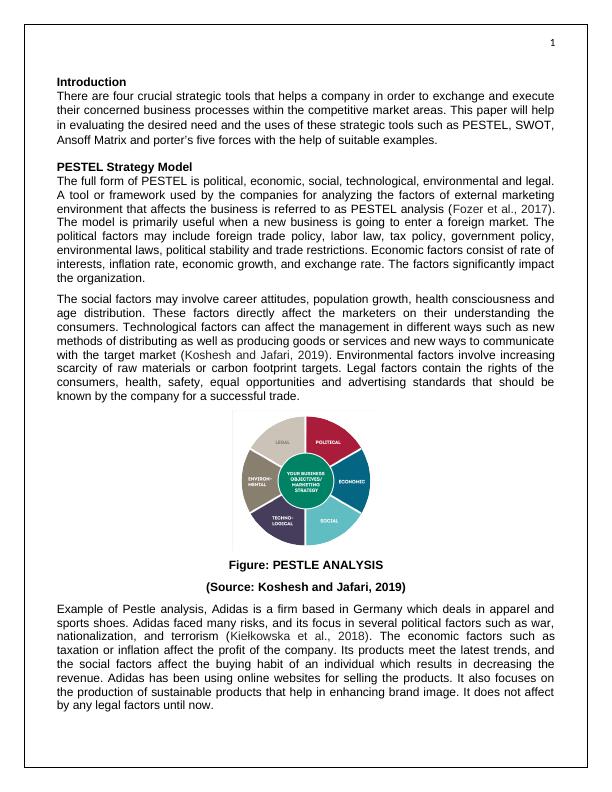Key Strategy Development Tools
Write a comprehensive discussion of four strategy models with practical application to current business examples.
8 Pages2075 Words73 Views
Added on 2023-01-23
About This Document
This paper evaluates the uses of four strategic tools - PESTEL, SWOT, Ansoff Matrix, and Porter's Five Forces - in helping companies exchange and execute their business processes within competitive markets. Examples from companies like Adidas, Telstra, Tesco, and Starbucks are provided to illustrate the application of these tools. The paper concludes by highlighting the importance of these tools in strategic management.
Key Strategy Development Tools
Write a comprehensive discussion of four strategy models with practical application to current business examples.
Added on 2023-01-23
ShareRelated Documents
End of preview
Want to access all the pages? Upload your documents or become a member.
Strategy Development Tools - Assignment
|11
|1942
|22
Key Strategy Development Tools | Report
|8
|2123
|23
MAIN BODY PESTLE Analysis, Porter's Five Force Model and SWOT Analysis
|9
|1728
|222
The key strategy development tools
|8
|2051
|22
Competitive Strategy: PESTEL, SWOT, and Porter's Five Forces Analysis
|14
|2538
|229
Strategy Management of General Electric And Air Conditioning Items
|13
|2529
|13



